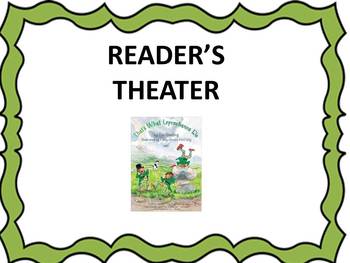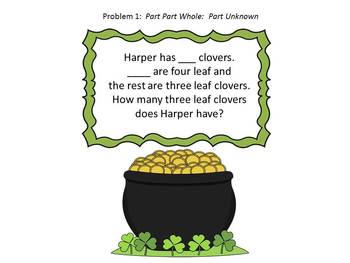Saint Patrick's Day History and Extension Activities
Library World
824 Followers
Grade Levels
K - 4th
Subjects
Standards
CCSS1.OA.A.1
CCSS2.OA.A.1
CCSS3.OA.A.1
CCSS4.OA.A.1
CCSSRL.K.1
Formats Included
- PDF
Pages
29 pages
Library World
824 Followers
Description
In this bundle you will find a lesson on the history of Saint Patrick's Day, including several short video clips from the History Channel, explaining Saint Patrick's Day customs.
After the history of St. Patrick's Day lesson, you will find a printable reader's theater script for the picture book, That's What Leprechauns Do, by Eve Bunting. The way the script is typed up, there are twenty narrators who get two speaking parts each. Plus there are several other specific characters from the story who get speaking parts as well.
After the reader's theater you will find five different Saint Patrick's Day-themed math CGI word problems. The problems come with printable problem strips for students to glue in their math binders. There are blanks in each problem in place of the numbers so that teachers can choose what numbers they feel are appropriate to their specific learners.
After the history of St. Patrick's Day lesson, you will find a printable reader's theater script for the picture book, That's What Leprechauns Do, by Eve Bunting. The way the script is typed up, there are twenty narrators who get two speaking parts each. Plus there are several other specific characters from the story who get speaking parts as well.
After the reader's theater you will find five different Saint Patrick's Day-themed math CGI word problems. The problems come with printable problem strips for students to glue in their math binders. There are blanks in each problem in place of the numbers so that teachers can choose what numbers they feel are appropriate to their specific learners.
Total Pages
29 pages
Answer Key
N/A
Teaching Duration
N/A
Report this resource to TPT
Reported resources will be reviewed by our team. Report this resource to let us know if this resource violates TPT’s content guidelines.
Standards
to see state-specific standards (only available in the US).
CCSS1.OA.A.1
Use addition and subtraction within 20 to solve word problems involving situations of adding to, taking from, putting together, taking apart, and comparing, with unknowns in all positions, e.g., by using objects, drawings, and equations with a symbol for the unknown number to represent the problem.
CCSS2.OA.A.1
Use addition and subtraction within 100 to solve one- and two-step word problems involving situations of adding to, taking from, putting together, taking apart, and comparing, with unknowns in all positions, e.g., by using drawings and equations with a symbol for the unknown number to represent the problem.
CCSS3.OA.A.1
Interpret products of whole numbers, e.g., interpret 5 × 7 as the total number of objects in 5 groups of 7 objects each. For example, describe a context in which a total number of objects can be expressed as 5 × 7.
CCSS4.OA.A.1
Interpret a multiplication equation as a comparison, e.g., interpret 35 = 5 × 7 as a statement that 35 is 5 times as many as 7 and 7 times as many as 5. Represent verbal statements of multiplicative comparisons as multiplication equations.
CCSSRL.K.1
With prompting and support, ask and answer questions about key details in a text.





